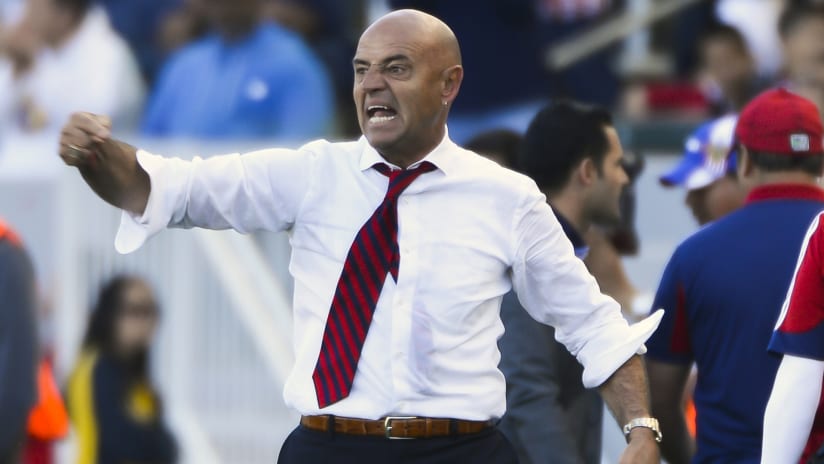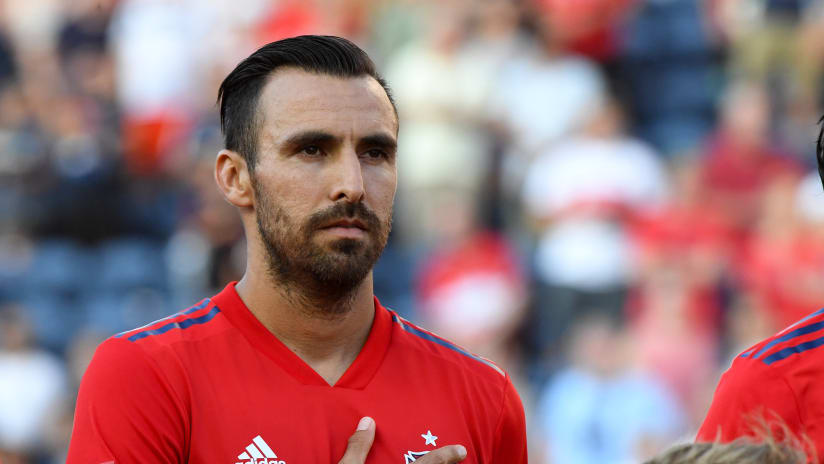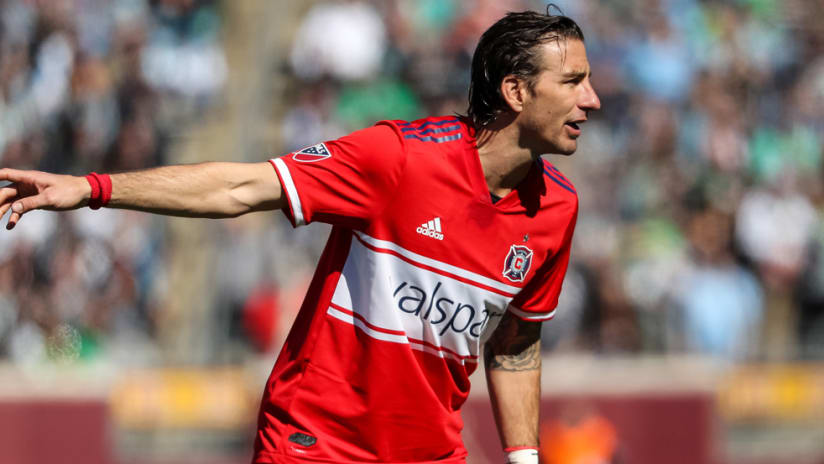It doesn't take much travel to see two extreme varieties of soccer being played in Major League Soccer so far in 2014.
While the LA Galaxy and Chivas USA share a stadium, their styles of play couldn't be any more different. Those differences, we’ll show, could go a long way toward explaining their equally opposite placing in the Western Conference standings.
Generally speaking, teams that attempt more passes also attempt more crosses. This relatively weak correlation exists simply because teams that have more possession tend to do more things with the ball, and crossing is just another one of those things. In simple terms, teams that have more of the ball also have the opportunity to cross more often.
However, some teams don't seize that opportunity at the same rate as others, opting for a more indirect "ball-on-the-deck" approach. Our goal here is to measure that.
To do so we have avoided raw "crosses per game" because of its bias toward teams that tend to see more of the ball. We have also avoided "crosses per total passes" because of how heavily it's biased by "game state" (or which teams spend more time winning or losing). Instead, we've opted to control "non-corner crosses per game" by "passes per game" to determine which teams attempt disproportionate amounts of normal passes for the number of crosses they attempt.
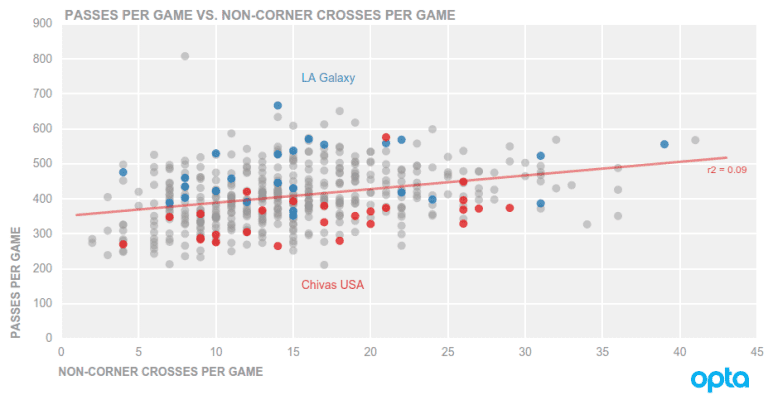
Here's what you're looking at: The trend line illustrates the relationship between the volume of attempted "passes" and "crosses" by a team during a single match – which varies from game to game but remains positively correlated. In practice, the trend line expresses "expected passes per cross" and the Galaxy are way, way above the line more often than not – which speaks to their willingness to keep the ball and play through you rather than over or around.
Chivas? They're on the opposite side, and are pretty definitively out of ideas. When in doubt, cross.
But in case it wasn't already clear, below is a table that expresses the difference between a team's pass volume and their expected pass volume. More literally: how far is their dot on the above chart away from the red line? This distance expresses how many more (or less) passes a team attempted versus what an average team would be expected to attempt given the same volume of crosses.
The Galaxy, on average, attempt more 60.2 passes than you would expect from an average team with a similar crossing rate. Chivas USA, in contrast, attempts 63.7 less passes on average than expected.
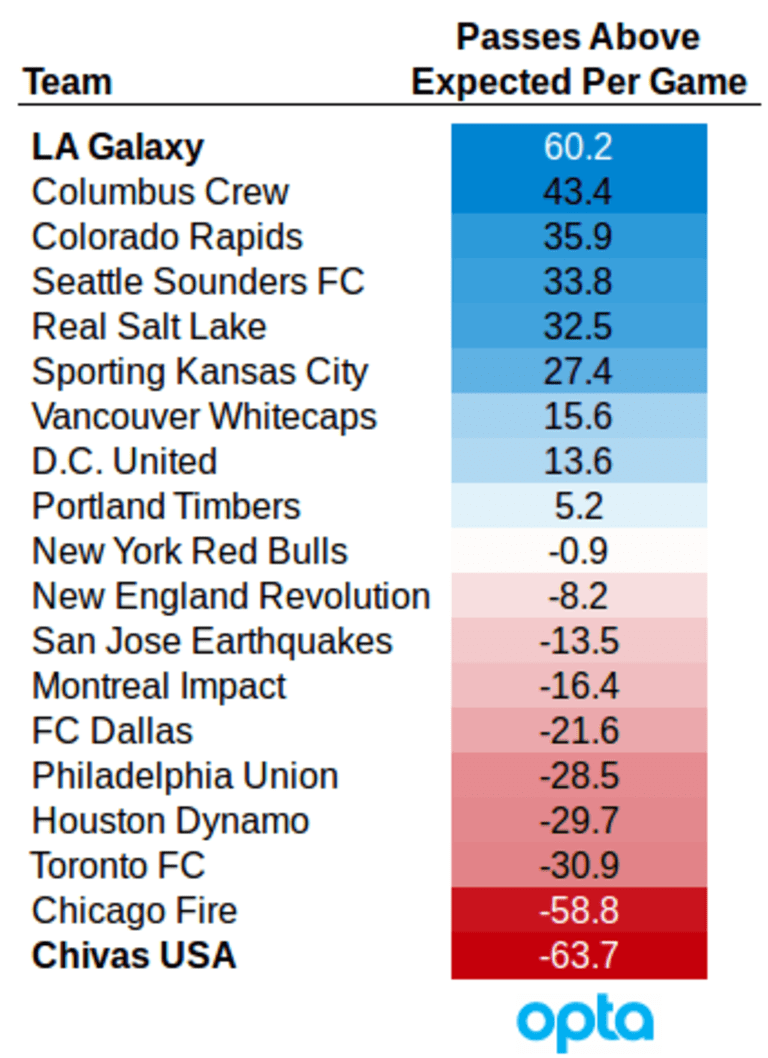
The Galaxy win by keeping the ball and playing right through you. Chivas lose by lobbing hopeful balls into the 18.
Another team that trends toward the top of the keep-ball ratings are the Colorado Rapids, who happen to be playing LA on Friday (10:30 pm ET; NBCSN, TSN2). Despite their recent troubles – most of which have been defensive, as well as some profligacy in front of net – Colorado have stuck with their passing-oriented approach.
Against the Galaxy, they will come up against a team with proven mastery of that very style:
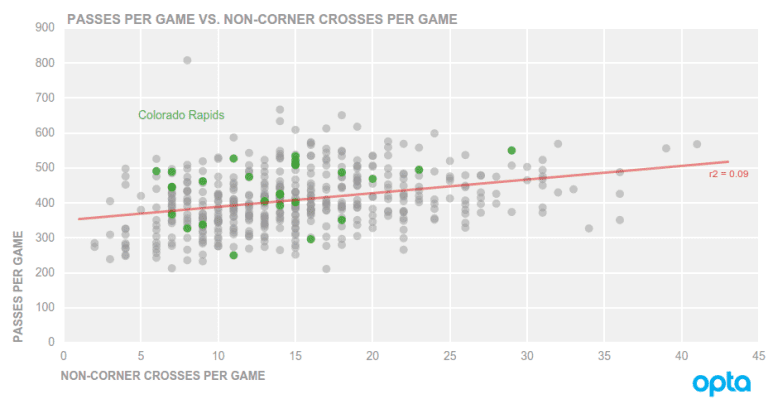
One more note: Of the nine teams above the league average for passes per cross, seven are in playoff spots, while only three of the bottom 10 would make the postseason if it started today.
You can draw your own conclusions.


